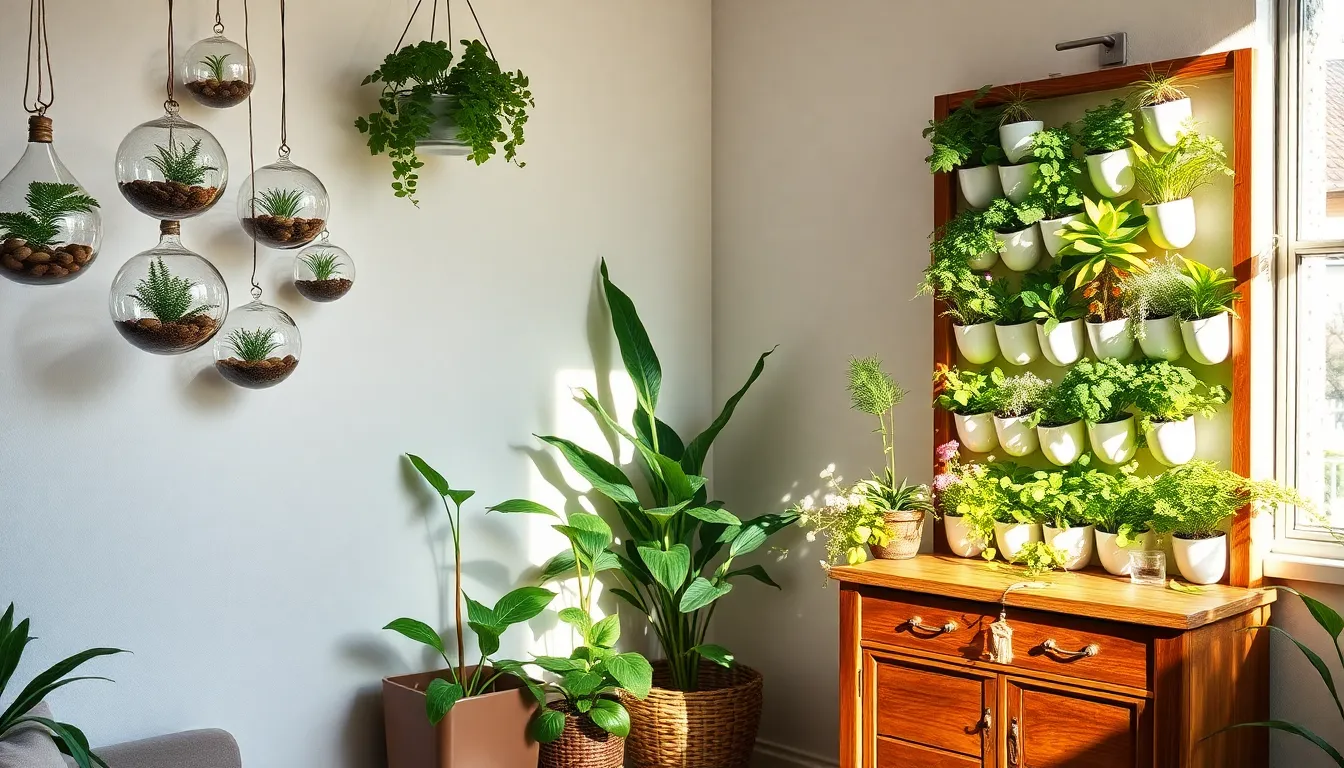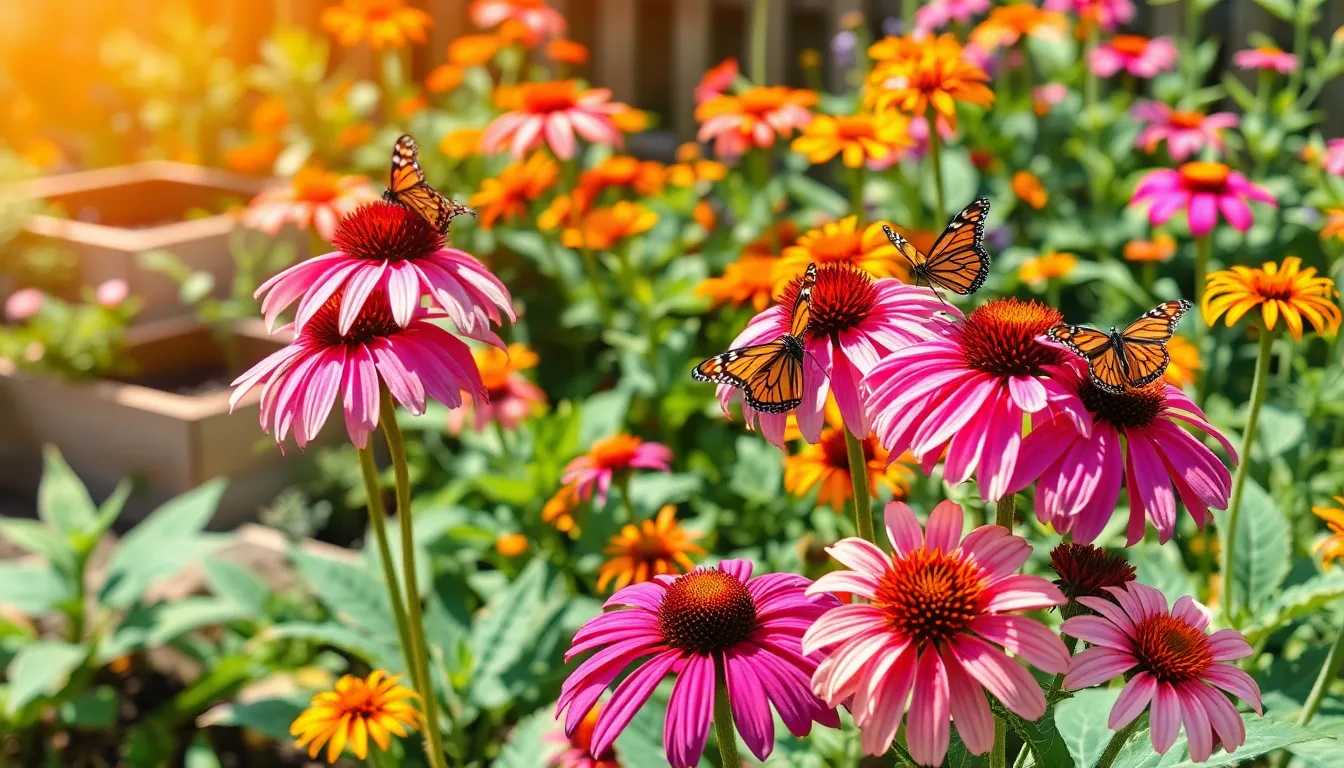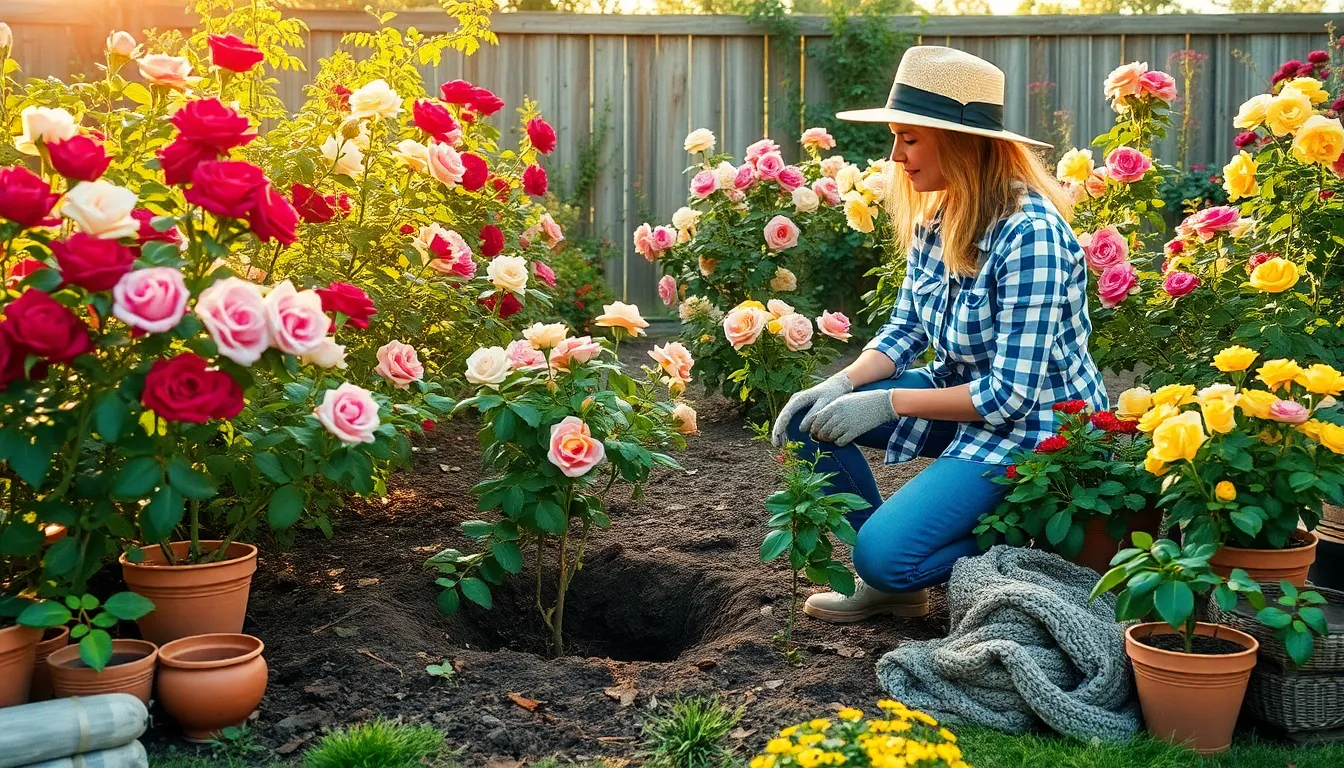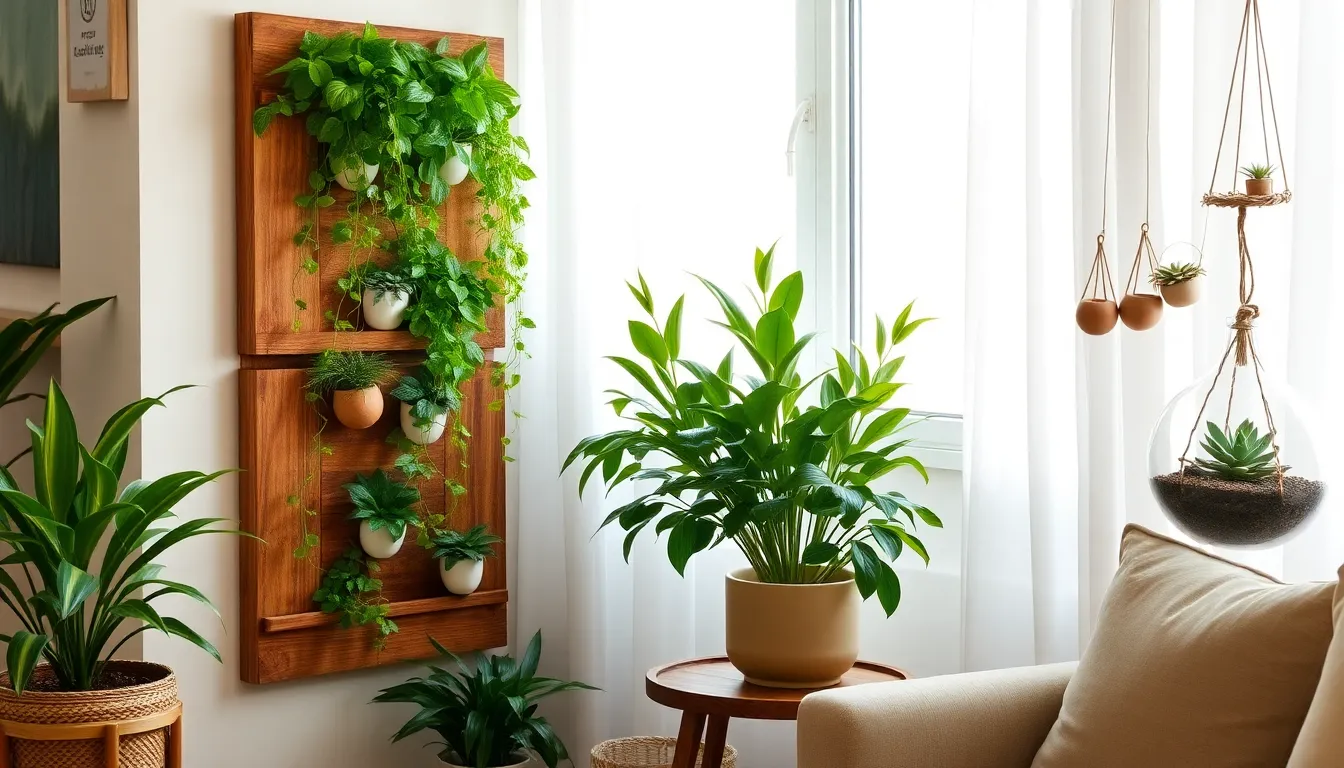Welcome to a world where your home becomes a living tapestry, adorned with nature’s finest art. Whether you’re just starting your gardening journey or have a seasoned green thumb, “7 Unique Plant Display Ideas for Your Home” invites you to explore creative ways to bring vibrancy into your space.
Imagine transforming your living room into an oasis that not only dazzles the senses but also purifies the air and boosts your mood. These carefully curated ideas promise not just aesthetic appeal, but practical benefits that elevate your daily life, making every moment spent at home a retreat into tranquility.
Dive into this guide with confidence, knowing that each suggestion is crafted to ensure your success and delight. The joy of gardening is in the journey and the reward, and with these innovative displays, you’ll find new reasons to smile every day as your home blooms with life.
Elevate Plants with Floating Shelves
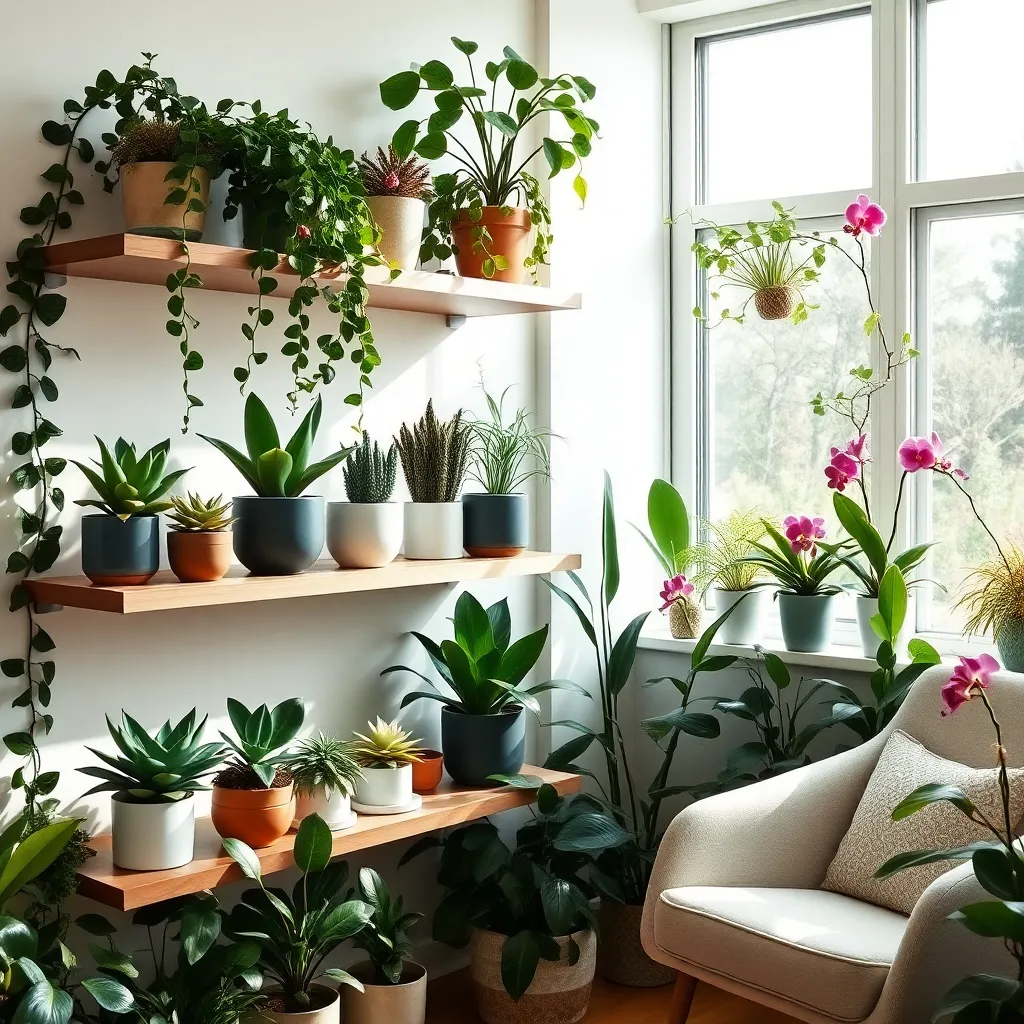
Floating shelves can transform a plain wall into a vibrant, living art piece, making them a perfect choice for displaying plants. To start, ensure the shelves are sturdy and can support the weight of your chosen plants and their pots.
Choose pots with drainage holes to prevent water from pooling at the base, which can lead to root rot. It’s essential to use a lightweight potting mix to keep the overall weight manageable and promote healthy root growth.
When selecting plants for your floating shelves, opt for varieties that thrive in indirect light, such as pothos, ferns, or spider plants. These plants are not only easy to care for but also add lush greenery to your space with minimal effort.
Watering needs will vary based on the plant type and indoor conditions, so check the soil moisture regularly. A good rule of thumb is to water when the top inch of soil feels dry; consider using a moisture meter for more accuracy.
Group Varieties in Hanging Baskets
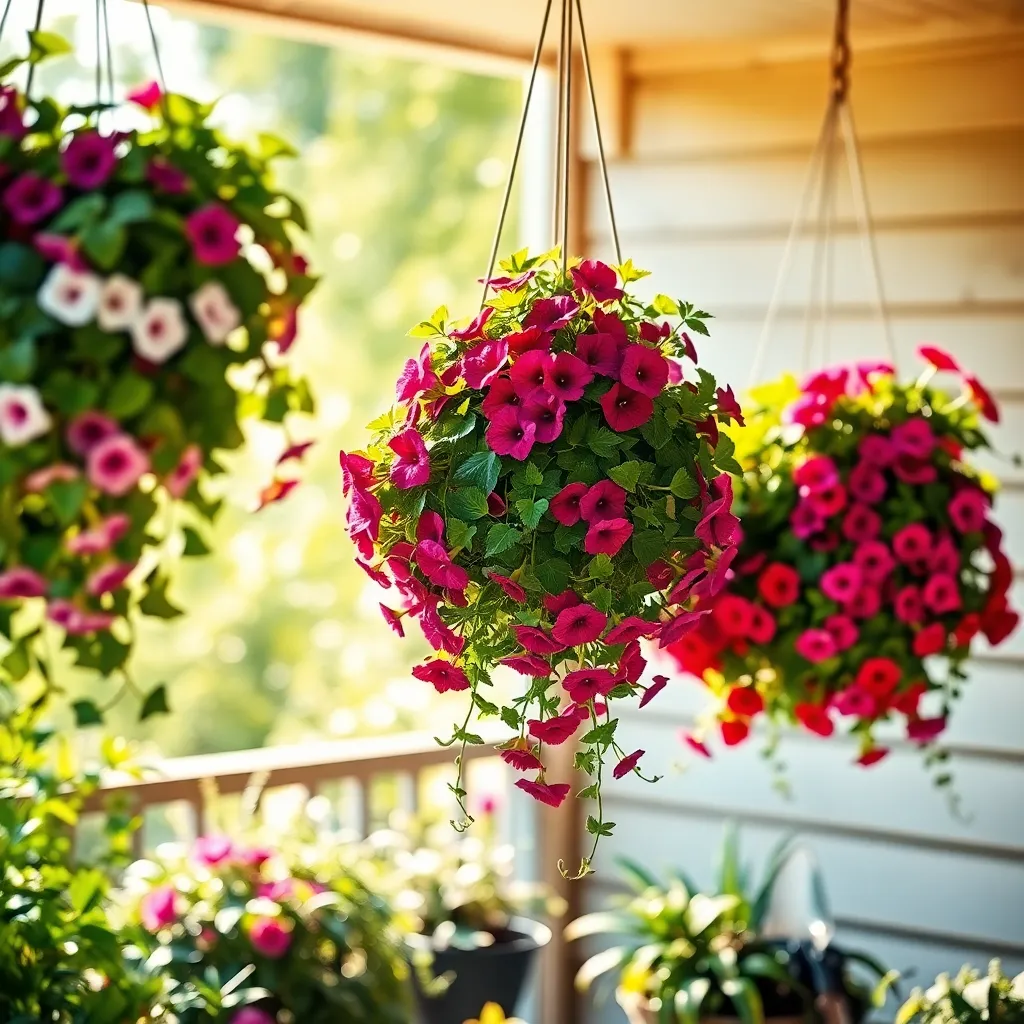
Hanging baskets offer a versatile way to group a variety of plants, creating a vibrant display that saves space. For beginners, selecting plants with similar light and water needs is crucial to ensure all thrive in their shared environment.
Choose plants that spill, thrill, and fill to create a balanced and dynamic arrangement. Consider combining trailing varieties like ivy or trailing lobelia with upright plants such as geraniums for height and a central focus.
In terms of soil, using a high-quality potting mix is essential for proper drainage and root health. Adding a slow-release fertilizer can provide consistent nutrients, supporting your plants throughout the growing season.
Watering hanging baskets can be tricky, as they tend to dry out faster than ground plants. Check the moisture level daily, especially in warm weather, and water until you see it draining from the bottom to ensure thorough hydration.
Craft a Living Wall Art
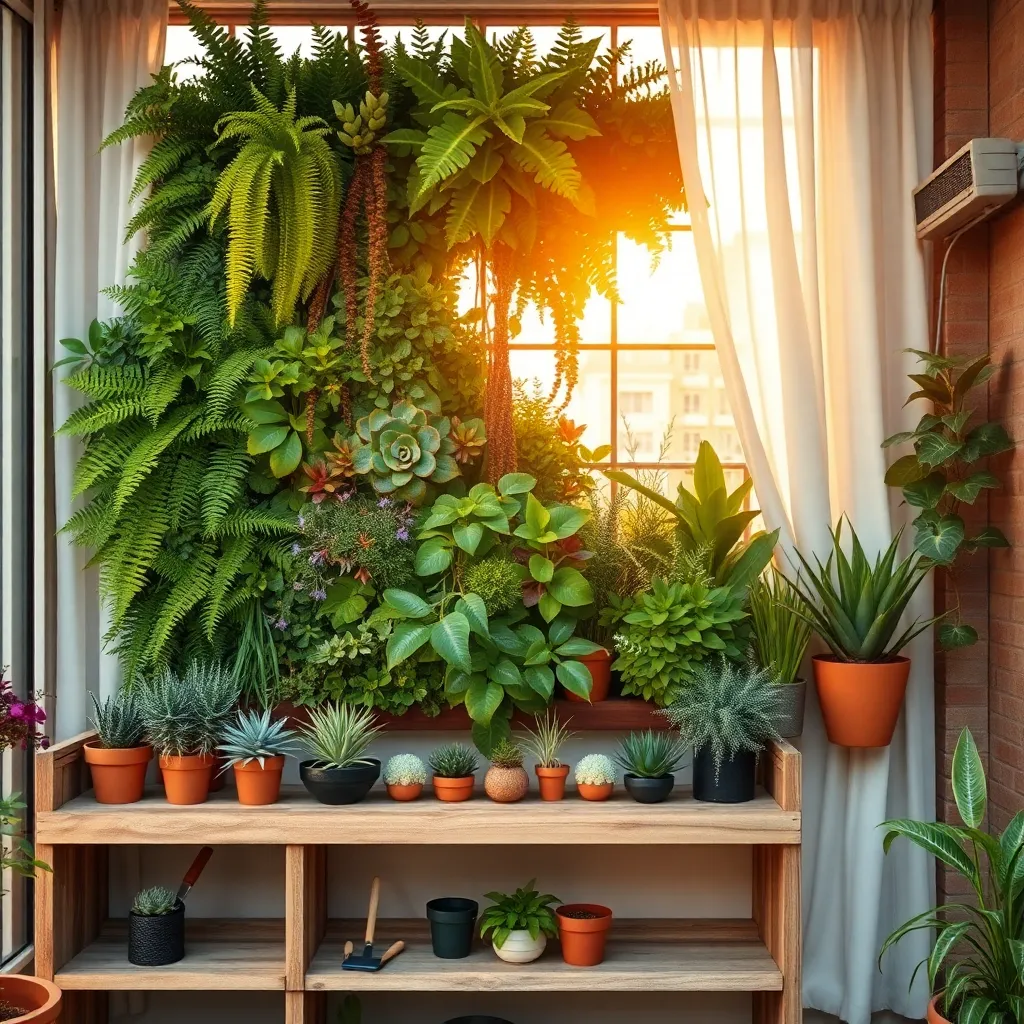
Transforming a blank wall into a living piece of art is a rewarding way to bring nature inside your home. Begin by selecting a location with sufficient light, as most plants you’ll want to use will thrive in bright, indirect sunlight.
Choose a variety of plants that suit your aesthetic and environmental conditions. Consider using a mix of ferns, ivy, and succulents for texture and visual interest, as each offers unique leaf shapes and colors.
To construct your living wall, use a sturdy frame that can support the weight of soil and plants. A vertical planter or modular system can simplify the process, providing pockets for each plant to grow comfortably.
When planting, use a high-quality potting mix that retains moisture but also drains well. Regular misting or a drip irrigation system can help keep your plants hydrated, especially those that prefer a humid environment like ferns.
Maintenance is key to keeping your living wall vibrant. Prune regularly to prevent overgrowth and inspect plants for pests, addressing any issues promptly to maintain plant health.
Use Terrariums for Mini Displays
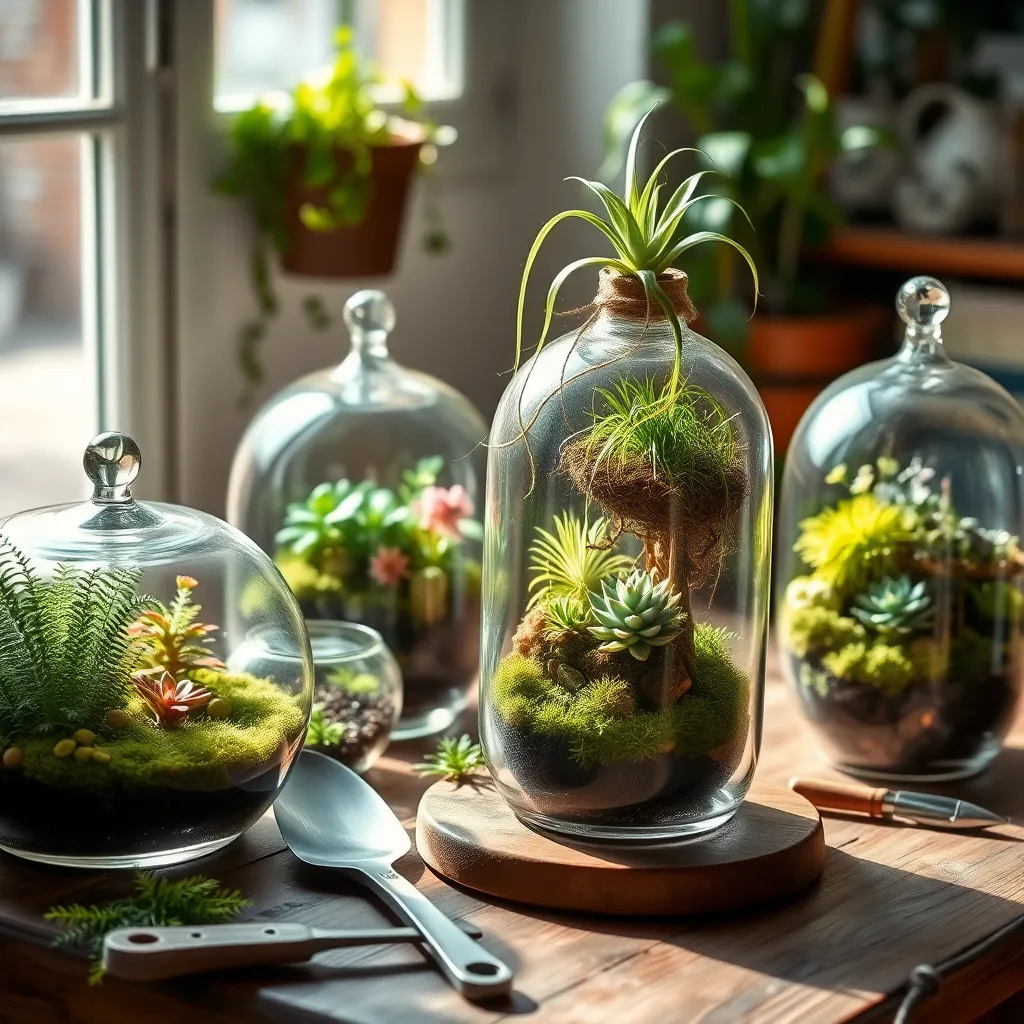
Terrariums offer a delightful way to create miniature plant displays that fit perfectly on desktops or shelves. They provide a controlled environment, making it easier to maintain humidity and temperature for your chosen plants.
To begin, choose a glass container with a lid to help retain moisture, which is crucial for most terrarium plants. Select small, slow-growing plants such as mosses, ferns, or succulents, which are ideal for confined spaces and require minimal care.
When setting up your terrarium, layer the base with small pebbles for drainage, followed by activated charcoal to keep the air fresh. Add a layer of potting soil suitable for your plant choice, ensuring it’s lightweight and drains well.
Watering should be minimal to avoid waterlogged conditions—a light misting every few weeks is often sufficient. Place your terrarium in a spot that receives indirect light; too much direct sunlight can cause overheating and harm the plants.
For a more advanced touch, consider incorporating decorative elements like small figurines or stones to enhance the visual appeal. Regularly prune any overgrown plants to maintain a neat and healthy display, ensuring your terrarium remains a vibrant focal point in your home.
Repurpose Ladders as Plant Stands
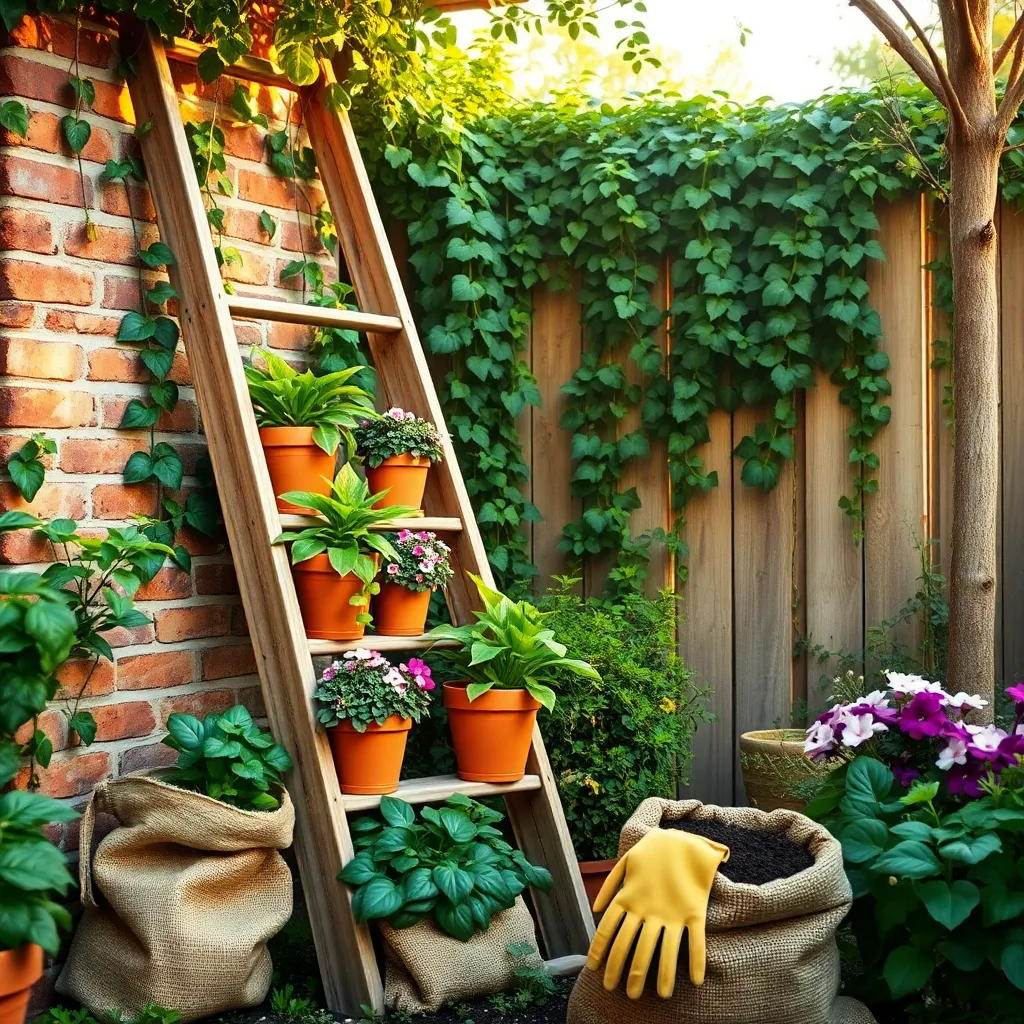
Transform an old ladder into a charming plant stand to add vertical interest to your space. Simply lean it against a wall or set it up freestanding, and you’ll have multiple tiers for displaying a variety of plants.
Opt for a wooden or metal ladder depending on your style preference and the weight of your plant pots. For a rustic look, a weathered wooden ladder works beautifully and adds a touch of vintage charm to your display.
When arranging plants, place those that require more light on the top rungs where they can soak up the sun. Shade-loving plants, such as ferns and pothos, can thrive on the lower rungs where sunlight is less direct.
To help maintain the health of your plants, ensure each pot has proper drainage to prevent waterlogging. Consider lining the rungs with a tray or saucer to catch any excess water and protect your floors or furniture.
Create Centerpieces with Driftwood
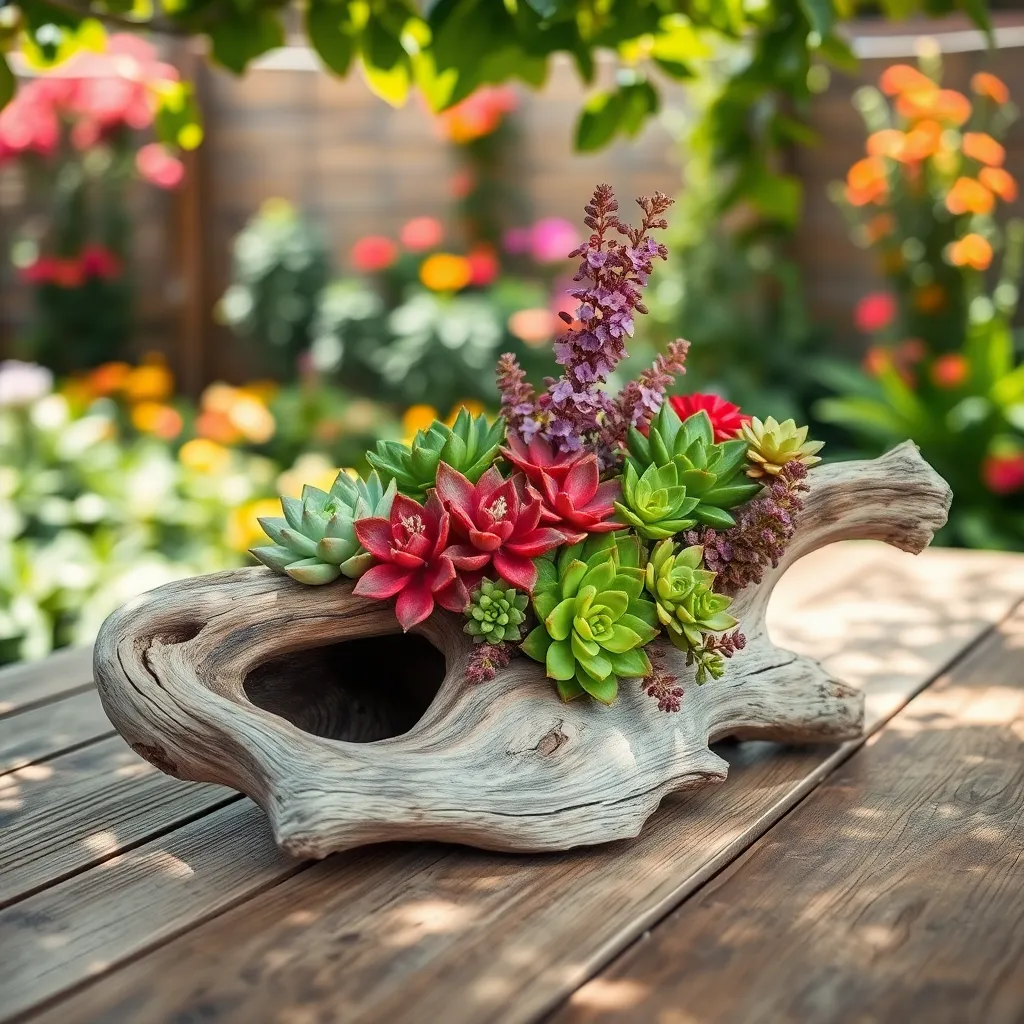
Driftwood offers a unique and natural way to create stunning centerpieces for your home. Consider using it as a base for succulents, which thrive in the low-moisture environment that driftwood provides.
Begin by selecting a piece of driftwood with interesting shapes and crevices that can hold soil and plants. Ensure it is clean and dry before introducing any plants to prevent mold and rot.
To create your centerpiece, fill the crevices of the driftwood with a well-draining soil mix, ideal for succulents. Cactus soil or a mix of sand, perlite, and potting soil works well to prevent overwatering.
Plant small succulents in the soil-filled crevices, positioning them securely to prevent them from falling out. Water sparingly, allowing the soil to dry completely between watering, as succulents are drought-tolerant and susceptible to root rot.
For those looking to add an advanced touch, consider incorporating air plants, which can be tucked into tight spaces without soil. They can be misted occasionally to maintain humidity, adding an intriguing layer to your driftwood centerpiece.
Arrange Plants in Tiered Trays
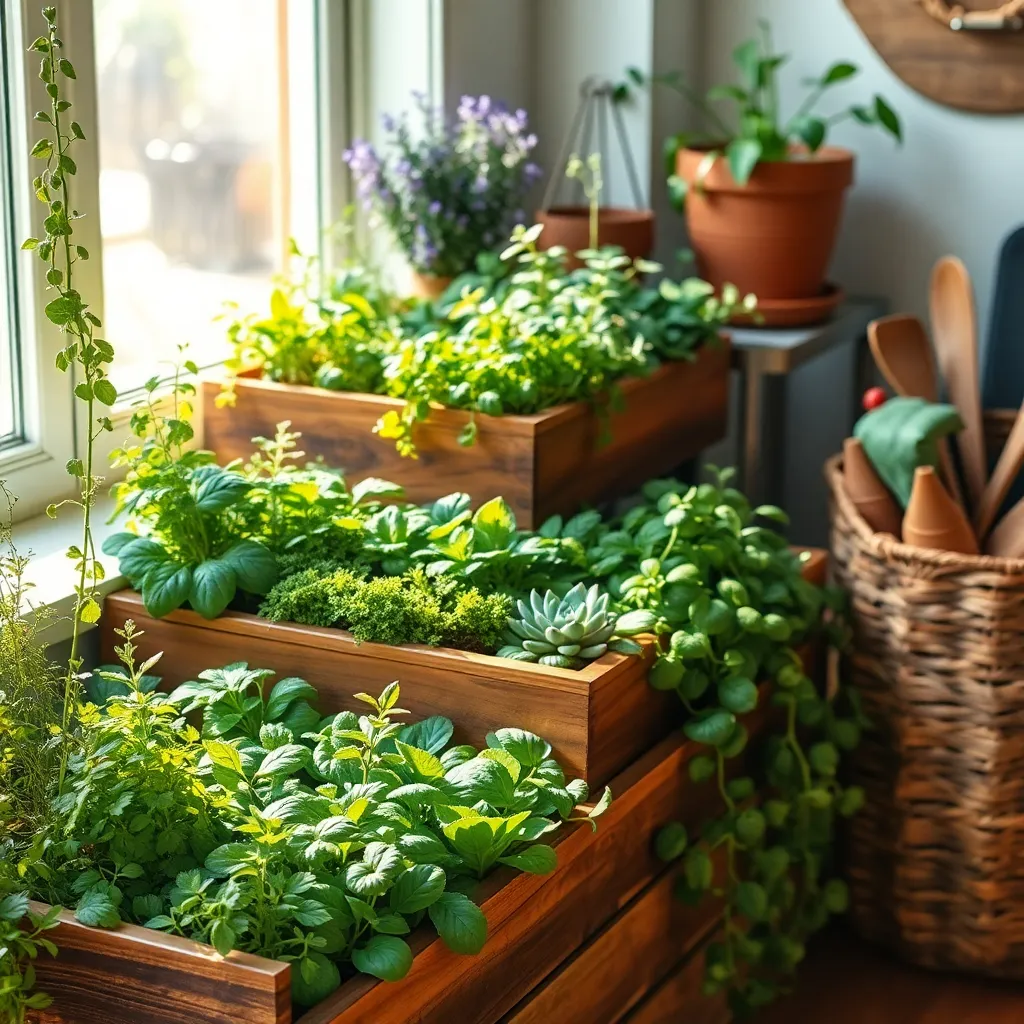
Tiered trays offer a beautiful way to display a variety of plants while maximizing vertical space. Choose a mix of small potted plants such as succulents, ferns, and ivy to create a lush, layered look that catches the eye and adds depth to your display.
When arranging your plants, consider the light requirements of each species. Place sun-loving plants like succulents on the top tier where they’ll receive the most light, and shade-tolerant plants like ferns on the lower tiers.
For optimal growth, use a well-draining soil mix suitable for the plants you select. Succulents thrive in a cactus mix with sand or perlite added for drainage, while ferns prefer a rich, peat-based potting mix to retain moisture.
Watering can be tricky with tiered arrangements, so monitor each plant’s needs closely. Water succulents sparingly, allowing soil to dry between waterings, while ferns require more consistent moisture, so check them every few days.
Conclusion: Growing Success with These Plants
As we’ve explored in ‘7 Unique Plant Display Ideas for Your Home,’ nurturing your home environment can mirror the nurturing needed in relationships. From hanging gardens that elevate your space and spirit, to terrariums that remind us of the beauty of close-knit bonds, each idea reflects a key relationship concept: growth, adaptability, support, beauty, patience, nurturing, and harmony. These concepts not only transform your living space but also offer valuable insights into cultivating thriving relationships.
Why not start today by choosing one plant display idea to implement? As you arrange your new green companion, consider how these concepts can also bring growth and balance into your interpersonal connections.
Remember, relationships flourish with attention and care, much like your plants. Bookmark this article now to revisit these insightful parallels whenever you need a gentle reminder or fresh inspiration.
Looking forward, embracing these ideas will not only beautify your home but also enrich your relationships, setting the stage for deeper connection and lasting success. Let this be the first step towards a more harmonious and fulfilling life. Together, let’s nurture both our plants and our relationships to thrive.

